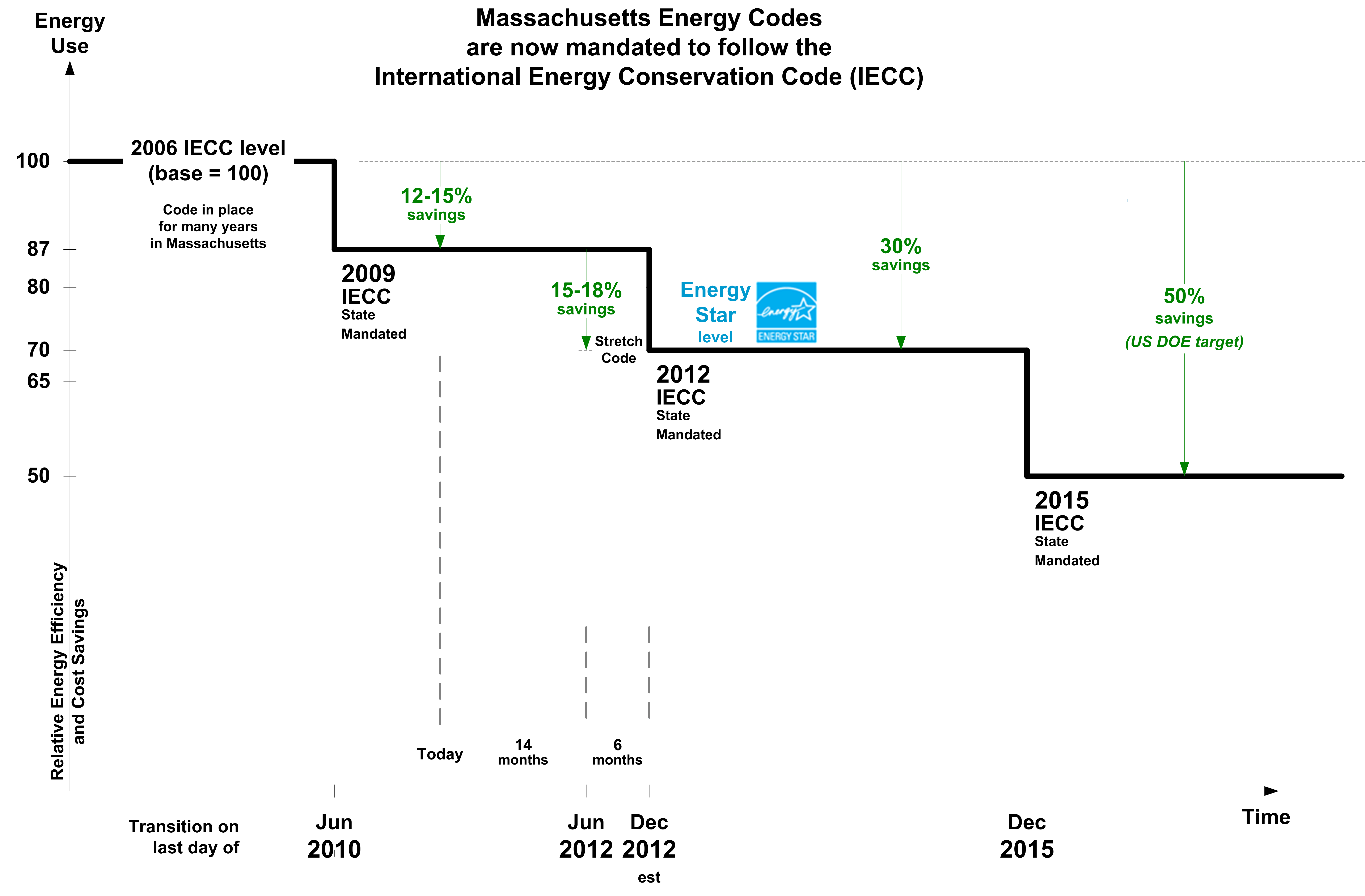A well-attended meeting of the Truro builders' community took place on April 11th at Montano's Restaurant in North Truro. Twenty-nine people attended to hear the latest information on energy code improvements that will be coming in the next two years.
The Builders' Resource & Energy Workshop (BREW) meeting was sponsored by the Truro Energy Committee, in cooperation with the Building Department. Building Commissioner Tom Wingard and Electrical Inspector John Browne were both in attendance, along with Truro builders, electricians, and architects.
Presentations
Brian Boyle, chair of the Energy Committee, opened the BREW meeting with remarks about Truro's goals for reducing the town's rising energy costs. Town plans include overlaying the capped landfill with a "solar farm." He also provided a handout that showed where the state mandated energy codes are heading, including the optional Stretch Energy Code, the mandated 2012 IECC (International Energy Conservation Code), and the future 2015 IECC. The residential Stretch Code is only one page, and a copy was provided to each attendee. The requirements of the Stetch Code are expected to become mandated as part of the 2012 IECC.
Bruce Torrey, of Home Energy Raters LLC, spoke about the requirements of the new energy codes (Stretch Code and 2012 IECC) and how the Home Energy Rating System (HERS) applies. He gave practicle advice and suggestions for least-cost methods of energy-efficient building.
Michael Berry represented the Energy Star Massachusetts programs. He encouraged builders to become Energy Star Partners and provided information on the program. "Last year, 41% of new homes in Massachusetts were built to Energy Star standards," said Berry. Well over a year before the next level of energy-efficient codes become effective, builders and consumers are voluntarily recognizing the cost-effective benefits of improved building practices. The Energy Star program can be of significant benefit and complement the official energy code regulations.
Questions and Answers
The attendees asked numerous questions about specific instances that might occur in the field.
"If we adopt the code, will the technology be able to meet the code?" An insightful question, to which Bruce Torrey, Brian Boyle, and Tom Wingard all spoke on how the energy code evolution is a collaborative process that includes building products manufacturers. Those manufacturers help guide the International Code Council as to what are practical and cost-effective measures.
"What if the walls of a rehab are gutted but the ceiling is left intact ... do we have to insulate the ceiling?" This was an excellent question by John Browne, electrical inspector. If the ceiling had old-style recessed lighting fixtures in it, and they aren't rated to come in contact with insulation, then they might all have to be replaced. Bruce Torrey explained that the Stretch Code requires insulation be put into the newly exposed wall cavities only, and not in the ceiling, since the ceiling was not exposed. Needless to say, all electricians in the room breathed a sigh of relief.
Jackson Dutra summarized by remarking that builders would do well to accept that energy-efficiency in the building codes is the trend and should get on board with the programs that can help make the best of the changes.
Next Meetings
Plans for the next BREW meeting are being formulated. The Truro builder community will be providing input into topics and speakers that would be most beneficial.
Special thanks to Ronni Farrell, a licensed contractor and Energy Committee member, who made a great effort to get the word out and encourage attendance.
